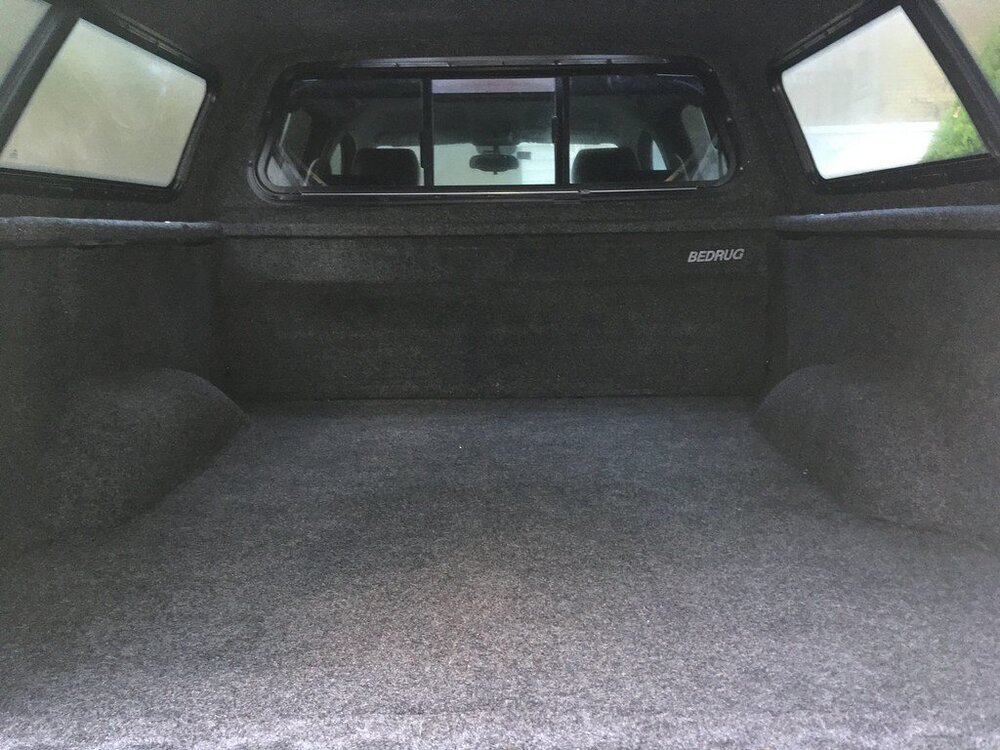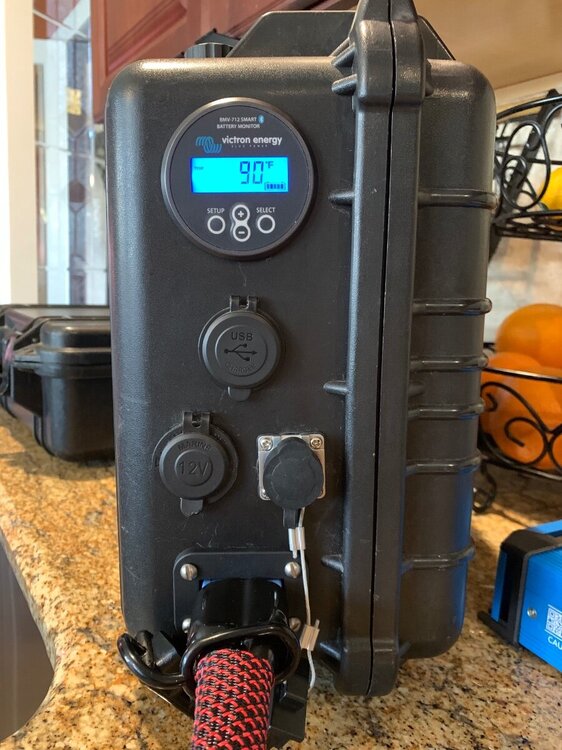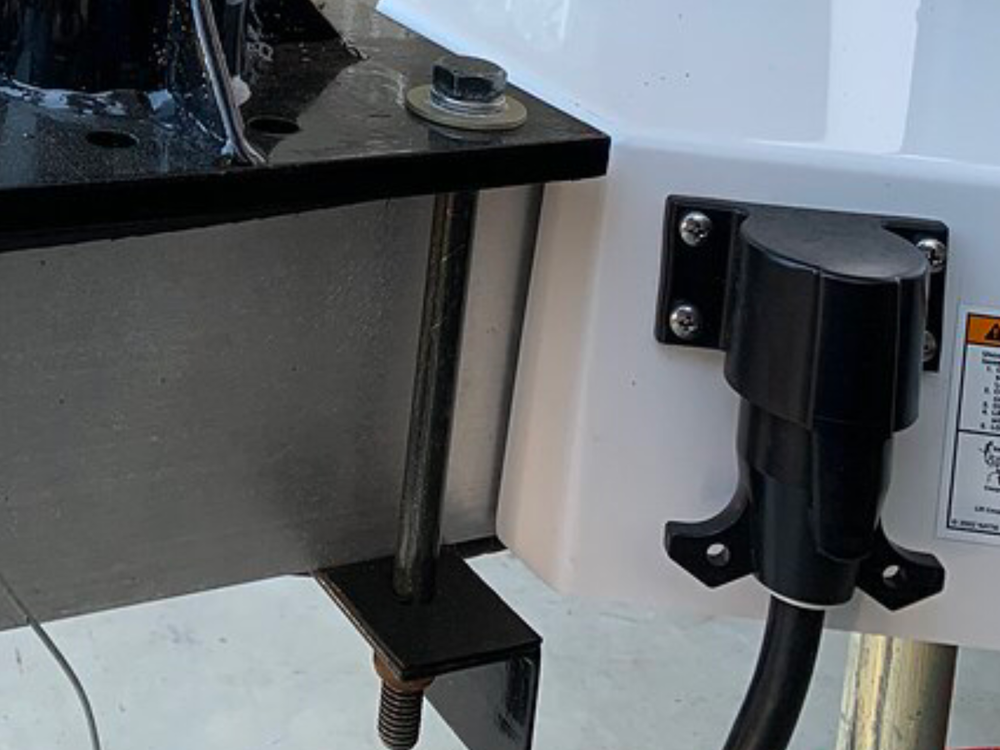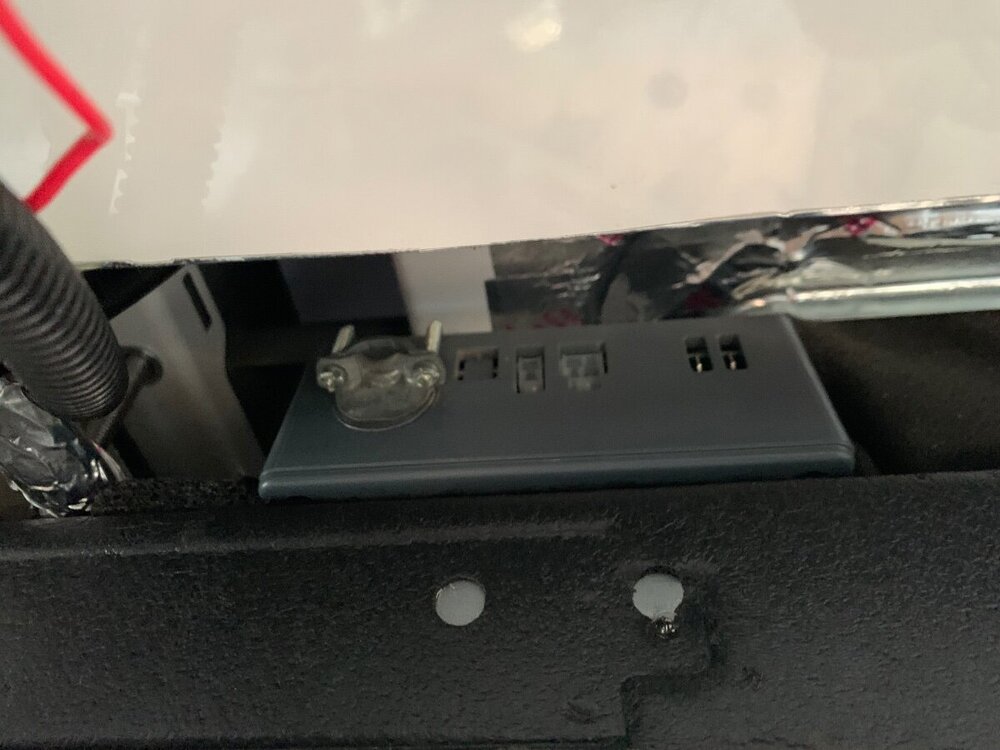
Ronbrink
Member+-
Posts
860 -
Joined
-
Last visited
-
Days Won
20
Everything posted by Ronbrink
-
-
Chasing a window leak and pulling my hair out
Ronbrink replied to Cameron's topic in General Discussion
It should, best mixed 50/50 with water; vinegar and hydrogen peroxide can be used, as well in like manner. Don’t spray directly onto the mattress, rather lightly blot the mattress surface and allow to throughly dry. I would remove the mattress from the trailer for treatment, especially if there is high humidity inside or outside. -
This is a very good point! I did the same with a recent Atmos 4.4 install when replacing the DPll, the extra precaution taken with almost double the airflow of the new unit.
-
Dexter EZ-Flex zerks not accepting grease
Ronbrink replied to Fargoman's topic in General Discussion
Did you take pressure off the bolt by lifting up the trailer? You could also try rotating the bolt in place to see if it will then accept grease. -
Fridge Problems only on Propane
Ronbrink replied to carnivore's topic in Mechanical & Technical Tips
As @jd1923 referenced! -
Fridge Problems only on Propane
Ronbrink replied to carnivore's topic in Mechanical & Technical Tips
Being unsure of your ‘new sensor location’, I would be inclined to place it in the furthest and least accessible area for circulation in the fridge just to check if cold air is reaching it when loaded; test with and without fin fan ON and compare results. -
You are exactly right! I’ve had Rancho RS9000 shocks on my 4x4s for many years and they have nine settings to dial in optimum performance; lower setting for everyday use and commuting, higher setting for off-road. Pickup trucks are generally 2” lower in the front by design; load the bed and/or hitch a trailer and it will ‘squat’ to a more level stance. I installed front Rancho quickLIFT Strut and Coil Springs on my TV when new for looks, and on the rear an Air Lift LoadLifter 5000 for added stability, cargo equalization, comfort, and trailer leveling and adjustment.
-
Wilson WeBoost Cellular Antenna Mounting ?
Ronbrink replied to Dirt Duff's topic in Mechanical & Technical Tips
The rooftop-mounted external antennas may work under optimum conditions, but I wanted an antenna up high to clear obstructions (trees, topography). I’ve gotten cell service in parks claiming to not have cell service with a weBoost Drive X-RV setup; for instance Davis Mountains SP in West Texas. -
Strongway case from Northern Tool. Flexible panels are generally installed onto a mounting surface using beads of adhesive and/or some kind of tape, air space nil to nonexistent. My panels have been installed for four years and remain efficient with no issues. No thoughts on ‘excessive temperature at the ARE topper’, mine is lined with BedRug equivalent material which likely buffers heat transfer, if that’s even a concern.
-
For those that may find this statement confusing, when SDG first introduced the Dreiha Atmos 4.4 there was some misinformation spread via a video interview with Kevin Searer, owner and exclusive distributor for these units in the U.S.; said video was taken down soon after its release as pertinent factual information was disclosed. There was no purposeful intent by Kevin to mislead, only lack in understanding product claims and marketing tactics. I also recall a YouTuber that made an apology for conveying misinformation, as well. I concur, based on personal experience with the Atmos!
-
Perhaps this excerpt by a contributor to the sprinter-source.com forum will provide answer to your question: “The need for a soft start on an RV air conditioner isn't a new problem, this is the case with all 13.5k and 15k BTU air conditioners I've encountered. RVers have always known they experience air conditioner operation problems at low voltage campgrounds, particularly in the high temperature high current demand times of summer camping. The air conditioner compressor won't compete for power, it just doesn't run. The air conditioner fan runs but the compressor won't start if the shore power voltage is to low, because it can't get enough current. Issues with air conditioner high LRAs have become more apparent with the popularity of Lithium batteries and inverters. Folks want to run their air conditioner off Lithium batteries and a 3000w inverter, but dampening the LRA is the only way to do that. The Atmos LRA is 48.5a, Dometic Penguin ll LRA is 52a, and the Truma LRA is 58a. Micro-Air was the first company to realize the RV industry needed a solution for reducing air conditioner compressor LRA, which is why they created the EasyStart. Micro-Air had this market cornered until just a couple of years ago when SoftStartRV started producing a similar type of soft start device. Both the EasyStart and SoftStartRV dampened the Dometic Penguin ll's LRA to around 24a. The lower the LRA the easier for the RV electrical system to run it (shore or generator power or Lithium battery/inverter). All us LTVers have added EasyStarts or SoftStartRVs to our Dometic Penguin lls. The Truma technicians I interviewed at the Tampa RV Super Show made it clear their air conditioner needed a soft start and the if you wanted to use Lithium batteries and a 3000w inverter. They also were very clear that a 3000w inverter was the minimum sized inverter to operate their unit. I believe the SoftStartRV is the only unit that is compact enough to fit inside the Truma Aventa. Based on my observations of the Atmos running off my Xantrex 3000w and 1 of my Lithionics 320ah Lithium battery and then 2 and 3 batteries, I suspect it doesn't really have a soft start. The Atmos brochure says it has a "Low voltage startup function." The marketing for these Gree manufactured air conditioners are quite misleading, using the words low voltage startup, soft start, and inverter compressor in vague terms. I'm installing a SoftStartRV on my Atmos tomorrow to see if it improves upon some of the concerning behaviors I've been seeing. The Truma and Atmos have the identical Rated Load Amperage (RLA) of 10.5a at 120vAC or 136.5a at 13vdc (Lithium battery voltage). The Dometic RLA was 12.9a. The RLA is considered a maximum normal steady state operating current. Air conditioners can run on lower RLAs, as low as 70% under their RLA. In my testing of the Atmos I see it is using less RLA, which is very good. The Atmos heat mode runs about 20-30a more for heat mode. The Atmos brochure says cooling current is 11a (143a at 13vdc) and heating is 10a (130a at 13vdc), but I suspect those numbers have been accidentally reversed, because heat mode definitely takes more current and runs slightly louder in decibels than the Atmos cooling mode.“
-
Battery compartment door lock replacement
Ronbrink replied to StillGame's topic in Ollie Modifications
-
Sorry for the delayed response. I installed two HQST 100W 12V flexible monocrystalline solar panels on top of the A.R.E. bed cover; other equipment to include a Haoguo ABS solar double cable entry gland, EternaBond EB-RB020-50 Roof Seal 2”x50’, Renogy 20A MC4 waterproof inline fuse holder and a Victron SmartSolar MPPT 75/15 solar charge controller (all Amazon purchases). My Son provided a length of solar cable and MC4 connectors needed. The panels were positioned and secured around the edges with the EB tape, a hole was drilled through the bed cover at the cable gland and wires were routed inside to the charge controller. I built the portable 100 Ah power station to primarily run a Dometic CFX 75 dual zone cooler staged in the TV bed.
-
The other version of a 7-Pin holder widely used. Regardless of the type holder, it is good practice to use dielectric grease to further protect the plug contacts from moisture and dust intrusion.
-
Actually there are three wires (red, white, green) in the white sheath leading and connecting to the thermostat.
-
You’ll have to stretch your imagination a bit, hopefully you can visualize in your mind’s eye the approximate location. The control box occurs in the void between the bottom of the roof unit and the top of the new mounting frame plate, that space being the depth of the cutout measured from roof surface to ceiling surface. In the first pic (Dometic) the box would occur in the vicinity of the white label seen over the drain line. The second pic (Atmos) is a bottom view of the mounting frame plate with the box being situated on its’ topside, nestled up against the duct, a couple inches from the top right mounting bolt and faced outward along the downward angled edge of said plate. Looking closely at the third pic you can see the threaded bolt to the left and duct plate immediately right of the control box. The forth pic shows the three wire thermostat cable. The last pic may be of interest, wiring diagrams for the control box and thermostat. Hope this helps.
-
-
As previously indicated, my Dometic furnace is ‘good to go’! I will preface the following by saying this task was not as difficult as first perceived, perhaps because my DPll 11,0000 BTU unit wiring setup was unique. When installing the Atmos I did not take time to mess with the furnace wiring and thermostat dilemmas, one hurdle at a time. Having watched several install videos on SOBs and closely followed @rideadeuce’s experience with SDG, I remained uncertain regarding the furnace apparatus; wiring configurations varied and In all instances the existing thermostat was abandoned. While dismantling the DPll I found all AC/DC wiring involved a plug&play box, specifically a control box as part of a Dometic single zone kit to include a thermostat and wiring harness, as well (PNs: control box 3313191.000, thermostat 3316410.700). I didn’t think much of it at the time, since the Atmos junction box was all needed to connect AC power. However, in the days following the install my thoughts focused on the furnace and then it occurred to me that maybe the control box could be retained, making use of the existing DC harness and stock thermostat. First some afterthought matters to address: When installing the Atmos A/C wiring I did not utilize the inherent strain reliefs within the junction box, so it was opened, wires further secured, done. I decided to better seal the fiberglass edges of the ceiling cutout to inhibit potential unwarranted air draw (from within/between hull walls) given the higher operational CFM of this unit. In particular where the wires entered, a piece of closed cell foam was cut to size and shoved into the opening followed by an application of foil tape around said cut edges, to the extent possible, done. Onward! Here is how I proceeded forward: The ceiling grille was removed, mounting frame plate bolts loosened to free the loom wrapped DC wire bundle tucked away at initial install and ensure clearance of the control box within the void of perceived securement, DC wiring harness connected to the control box and all staged for an operational test of the furnace/thermostat. With AC/DC powers restored, I was pleased to find the Dometic thermostat operational, but had to chase an E5 code on the display. Although specific to the a/c, the freeze sensor wire needed to be plugged into the control box to clear the code. In order to test the furnace the Atmos was first used to drop the interior temp to 73.8° with the thermostat ‘FURNACE’ set to 77°. Voila! Following a second successful test of the furnace, the mounting point of the control box was cleared of an adhesive stock piece of foam and box prepared for installation. A self-adhesive strip of Velcro was applied to the leading edge of the box and subsequently affixed into position. The foam piece was then positioned against the box and pressed in place to help stabilize it. Next, corresponding wires were connected in respective ports, wire loom secured with tie wraps and tucked away, mounting frame plate bolts retightened, cover grille reattached and decorative screw covers placed for a final install, YAHOO!
-
Battery compartment door lock replacement
Ronbrink replied to StillGame's topic in Ollie Modifications
I have two of these locks on my skiff/trailer, one for the OB motor and another for the trailer hitch pin hole (keyed alike); great for tight quarters such as may be encountered in the battery box. I’ll take one and check for adequate fitment at the battery tray, as well as the bulldog, and report back. The reduced shackle exposure provides increased security, making it more difficult to reach with a bolt cutter or even grind. -
Since you mentioned the Atmos remote, I received the replacement GREE model from Amazon this morning; primarily because it has a backlight, which the stock remote lacks. Based on the product description I was unsure if it would work with the Atmos, being ‘This is NOT a universal air conditioner remote control’ and there was no compatible match. Free Returns, right? Well, I’m happy to report is does work, at least good enough for now; it came with no instructions so I need to further assess its full functionality. Better yet, it fits in the stock wall mount! BTW, I have the same Dometic thermostat.
-
Beech lane levelers for for Legacy Elite II
Ronbrink replied to TxMN2020's topic in Mechanical & Technical Tips
Same here, but never say “never”! -
Beech lane levelers for for Legacy Elite II
Ronbrink replied to TxMN2020's topic in Mechanical & Technical Tips
In ONE rare instance I lifted the back of the Oliver up high enough to level on a downward slope, whereby all four tires cleared the ground. I thought, “that’s cool”! Yes and yes, the trailer remained hitched to the TV and I severely regretted deploying the ‘landing gear’. Upon descent and ground contact, I came to the realization that the leaf spring shackles on both axles had flipped at the Dexter EZ Flex equalizer, YIKES! After several hours of toiling on the ground in the Texas summer heat and humidity I was back on the road. Not a proud moment, “chalk it up” as a learning experience! -
Fridge Problems only on Propane
Ronbrink replied to carnivore's topic in Mechanical & Technical Tips
My apologies for the post highjack. Getting back to your issue, any resolve? If your unit works fine on AC/DC, the problem could be the propane oriface impairing gas flow. -
Fridge Problems only on Propane
Ronbrink replied to carnivore's topic in Mechanical & Technical Tips
The interior fin fan wire was routed through an existing port in my Norcold, as seen in the above pic. The wire was then connected to a constant power source behind the fridge. You may recall that I tapped into the Oliver’s 12V DC to create two sets of lead lines, one for the interior fin fan another for the exterior exhaust fans (first pic). In your installation of the exterior fans the existing small block was used to provide power (second pic). Simply connect the interior fin fan leads to that block, as well. -
This is the “simple furnace thermostat” provided by SDG. Take notice it is currently on my dining table, as I just came in the house from getting the Dometic heater functioning. That should tell you something! Details of what I was able to make do forthcoming.











































